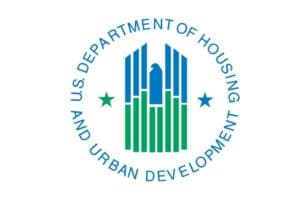HUD is seeking comments and recommendations on how to best align HUD policy, practices, planned action, regulations and guidance with Opportunity Zones. This request for information aligns with Executive Order 13853 which created the White House Opportunity and Revitalization Council and directed federal agencies to prioritize or focus Federal investments and programs on urban and economically distressed communities, including qualified opportunity zones. Comments are due on June 17. HUD is specifically seeking comments on the following questions:
- How should HUD use its existing authorities to maximize the beneficial impact of public and private investments in urban and economically distressed communities, including Opportunity Zones? For example:
- What actions can HUD take under existing authorities to prioritize or focus Federal investments and programs on urban and economically distressed communities, including Opportunity Zones?
- What actions can HUD take under existing authorities to minimize all of the regulatory and administrative costs and burdens that discourage public and private investment in urban and economically distressed communities, including Opportunity Zones?
- What tools can HUD provide to make local communities, investors and other stakeholders more aware of the full range of applicable Federal financing programs and incentives available to projects located in urban and economically distressed areas, including Opportunity Zones?
- What polices could HUD implement that would help community-based applicants, including recipients of investments from Qualified Opportunity Funds, identify and apply for relevant Federal resources?
- What policies could HUD implement that would make it easier for recipients to receive and manage multiple types of public and private investments, including by aligning certain program requirements?
- HUD is considering creating an information portal on Opportunity Zones. What types of information should HUD include in such a tool? How can it be made accessible to and most usable by HUD’s various stakeholders and customers? If the portal includes information on Federal financing programs and incentives beyond those offered by HUD, what types of information would be most useful to include?
- In what ways could HUD structure preference points for Opportunity Zones and incorporate policy objectives in the rating factors for applications in discretionary grant competitions to increase the incentive to invest in Opportunity Zones? In addition, how should HUD prioritize support for urban and economically distressed areas, including Opportunity Zones, in its grants, financing, and other assistance?
- What types of technical assistance should be offered through HUD?
- What role can HUD play in helping to ensure that existing residents, businesses, and community organizations in Opportunity Zones benefit from the influx of investment and remain the focus of their community’s growth moving forward?
- How can HUD properly evaluate the impact of Opportunity Zones on communities?
- How should HUD interact with other stakeholders to maximize the success of the Opportunity Zone incentive? For example:
- How should HUD interact with officials from State, local, and tribal governments, institutions, local and regional agencies, businesses, and individuals from the private sector to most effectively encourage beneficial investment in urban and economically distressed areas?
- How should HUD participate in Federal interagency efforts to help ensure that private and public stakeholders can successfully develop strategies for economic growth and revitalization in urban and economically distressed areas? Stakeholders might include investors; business owners; institutions of higher education (including Historically Black Colleges and Universities, as defined by 50 U.S.C. 3224(g)(2), and tribally controlled colleges and universities, as defined by 25 U.S.C. 1801(a)(4)); K–12 education providers; early care and education providers; human services agencies; State, local, and tribal leaders; public housing agencies; non-profit organizations; and economic development organizations.
- How should Federal technical assistance, planning, financing tools, and implementation strategies be coordinated across agencies to assist communities in addressing economic problems, engaging in comprehensive planning, and advancing regional collaboration?
- How might Qualified Opportunity Fund investments support the goal of ending homelessness?
- Are there other aspects of Opportunity Zones that should be considered and are not addressed in this request for information?
